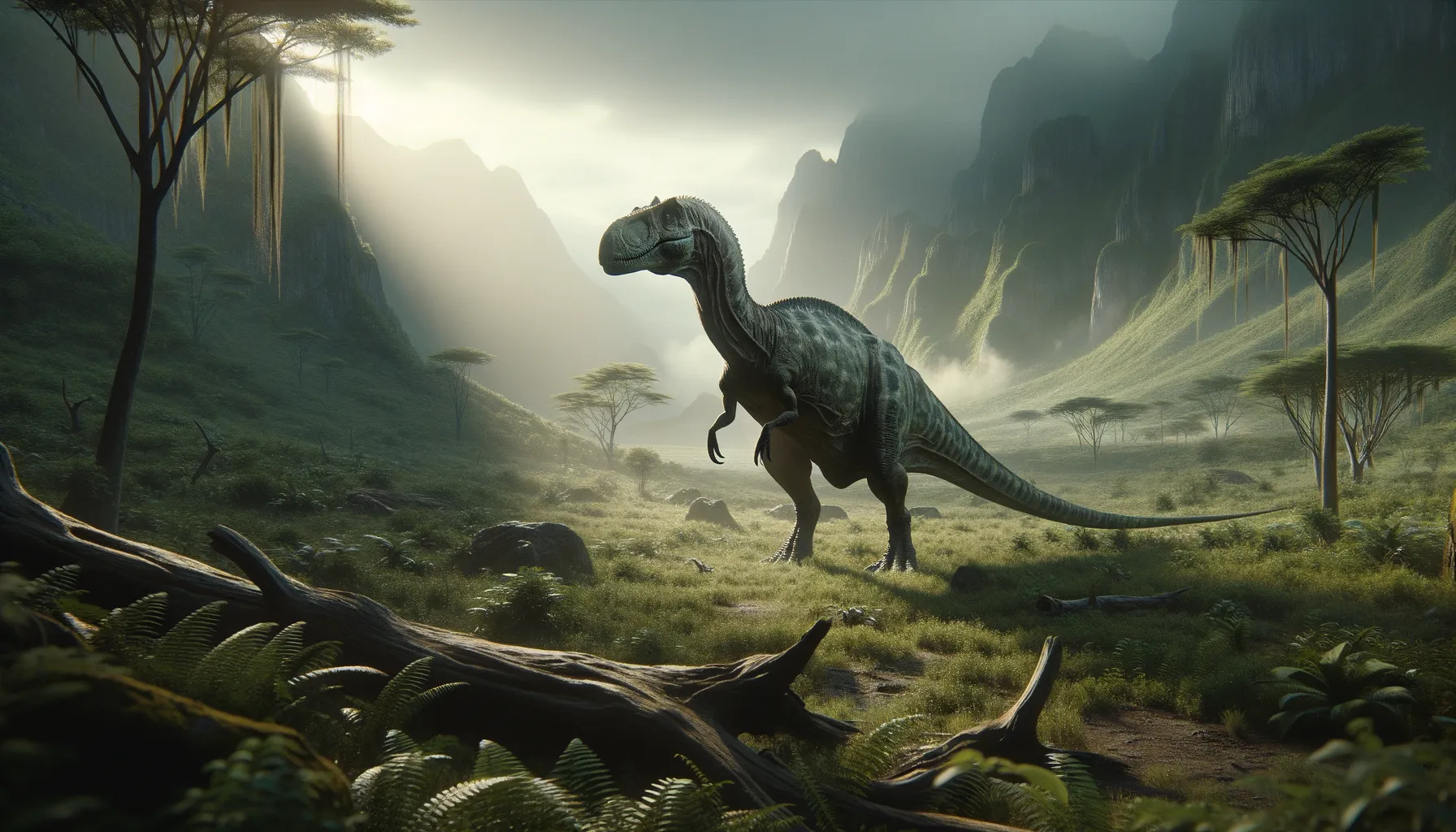
Adeopapposaurus
Herbivore of the ancient South.
Period
Jurassic
Length
Around 3 meters long.
Height
About 1 meter tall at the hip.
Weight
Approximately 40-60 kilograms.
Adeopapposaurus was a sauropodomorph dinosaur that roamed ancient South America during the Early Jurassic period. Known for its plant-eating habits, it possessed a lengthy neck and tail and walked on two legs, similar to its better-known relatives. Its physical build suggests a creature adapted to a relatively slow-paced, herbivorous lifestyle, spending much of its time foraging and avoiding predators.
Diet
Adeopapposaurus was herbivorous, primarily feeding on low-lying foliage and vegetation. Using its long neck, it could reach various plants that were essential to its diet, aiding in its survival.
Hunting
Adeopapposaurus did not hunt as it was a plant-eater. Instead, it focused on foraging for plant materials, using its long neck to reach food sources in different elevations.
Environmental challenges
Living in a changing environment, it had to adapt to fluctuations in vegetation availability. Seasonal changes could affect its food supply, making it necessary to migrate to find abundant resources. Predators posed a constant threat, requiring vigilance and potentially group living as defense strategies.
Speed
Moderate walking speed.
Lifespan
Estimated around 15-20 years.
First discovery
First discovered in San Juan Province, Argentina in 2009.
Fun Facts
- Adeopapposaurus was a dinosaur that lived during the early Jurassic period, about 200 million years ago.
- Its name means 'far eating lizard', because it had a long neck used for reaching leafy plants.
- Adeopapposaurus was a sauropod-like dinosaur, belonging to a group called Prosauropods.
- Scientists believe it was a herbivore, munching on plants to sustain its large body.
- Fossils of Adeopapposaurus have been found in what is now Argentina, offering clues about its environment and habits.
- Unlike the giant sauropods that came later, Adeopapposaurus was medium-sized, around 3 to 4 meters long.
- Its fossils have provided valuable information about the transition from early dinosaurs to the later, more massive sauropods.
Growth and Development
The species exhibited typical growth patterns for early sauropodomorphs, with rapid growth in juvenile stages. Fossil evidence suggests that it developed distinct physical features relatively quickly after hatching. Over its lifespan, Adeopapposaurus would continue to grow steadily, reaching full size as a mature adult.
Habitat
Adeopapposaurus inhabited regions that were likely semi-arid with varying vegetation. It would have been drawn to areas near water sources, which supported the growth of plants it fed on. The landscape was dotted with small forests and open plains, providing a mix of shelter and foraging grounds.
Interaction with other species
This dinosaur likely coexisted with other herbivorous dinosaurs, possibly sharing foraging grounds peacefully. It also had to be mindful of theropod predators that roamed the same territories. Social behaviors such as group living may have been employed to improve chances of survival against such threats.
Natural lifespan
Its lifespan likely spanned up to two decades in the wild.
Reproduction
Like many dinosaurs, Adeopapposaurus is believed to have reproduced by laying eggs. Clutches would have been laid in nests, potentially guarded or left in environments where the young could thrive post-hatching.
Social behaviour
The dinosaur may have exhibited social behavior that included living in small groups to improve survival odds. This social structure would have offered protection against predators and facilitated learning among younger individuals.
Fossil locations
Fossils of Adeopapposaurus have been discovered primarily in the Cañón del Colorado Formation in San Juan Province, Argentina. These findings have helped piece together much of what we know about its physical characteristics and lifestyle within its environment.
